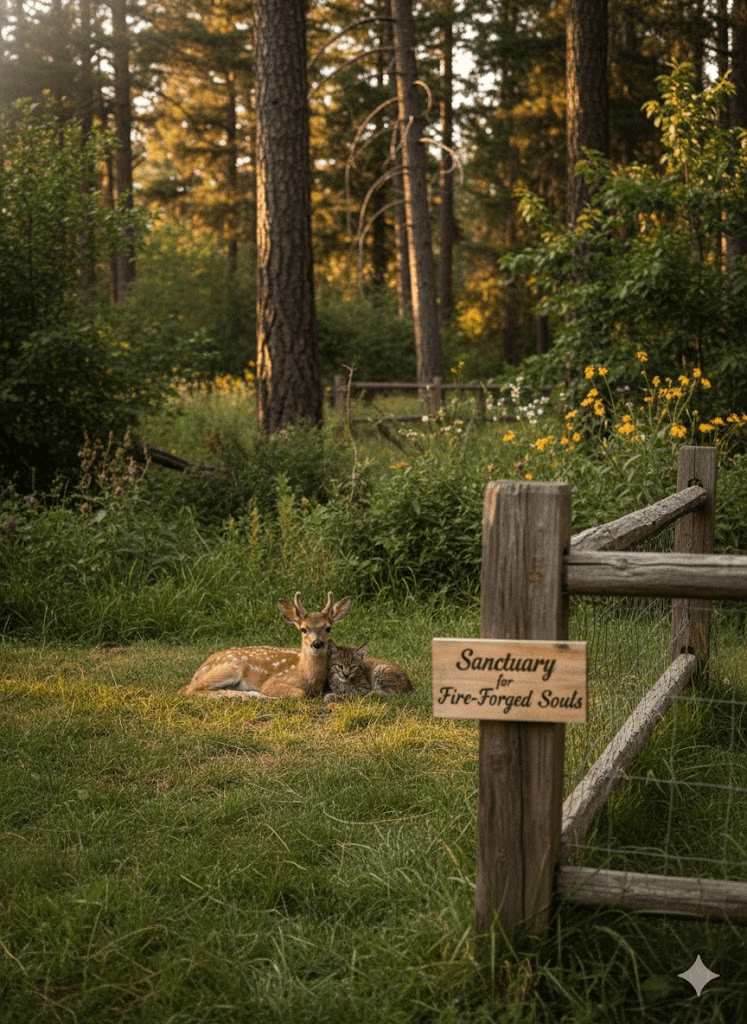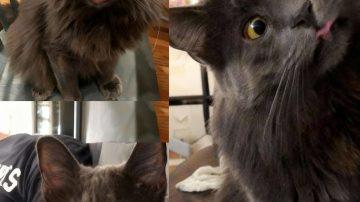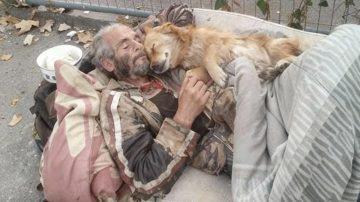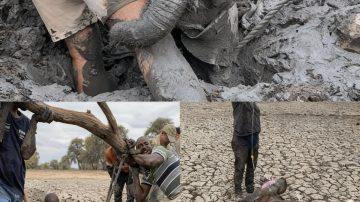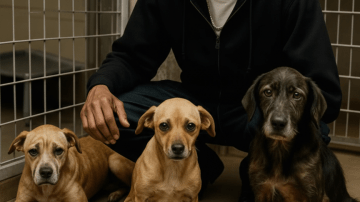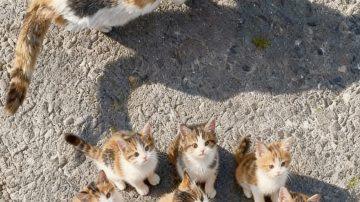In the wake of a devastating forest fire that scorched thousands of acres, leaving behind a landscape of ash and desolation, rescue teams ventured into the smoldering remains, their hearts heavy with the task of searching for any surviving wildlife. The air was thick with the scent of smoke and despair, and the usual sounds of the forest were replaced by an eerie silence. What they stumbled upon in an unlikely sanctuary—a seemingly abandoned office building on the edge of the burned-out woodland—left them not only speechless but profoundly moved. Tucked away beneath a dusty desk, in a tableau that defied all natural instinct and expectation, lay a tiny fawn and a young bobcat, curled together in a silent embrace, fast asleep. Both were covered in the grime of the inferno, soot clinging to their fur, their small bodies trembling with residual fear, yet they found solace and comfort not in solitude, but in each other’s unexpected presence. The bobcat, usually a solitary hunter, had nestled protectively around the vulnerable fawn, and the fawn, instead of recoiling, leaned into the bobcat’s warmth, their shared, unspoken bond a testament to a survival instinct that transcended the predator-prey dynamic. This discovery sparked a glimmer of hope amidst the ruin, a powerful reminder that even in the most catastrophic circumstances, life finds a way, and connections can form in the most extraordinary ways.
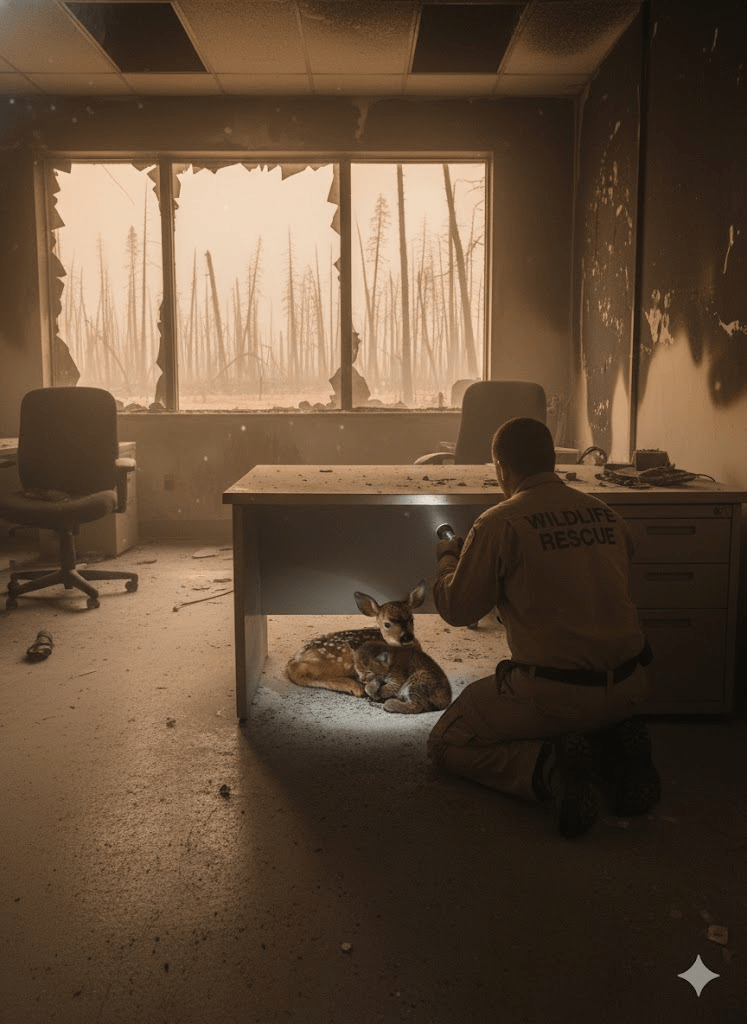
Gently, carefully, the rescue teams extricated the fragile pair from their makeshift refuge. The initial journey to the wildlife rehabilitation center was fraught with apprehension. Rescuers held their breath, expecting the natural order to reassert itself the moment the immediate danger of the fire was gone. Would the bobcat’s predatory instincts resurface? Would the fawn bolt in terror? Yet, to everyone’s astonishment, their peculiar bond not only held but deepened. At the center, they remained inseparable, a constant source of wonder and affection. They ate side by side, their small muzzles occasionally brushing, and slept curled together, finding a profound peace and security in each other’s continued presence. It was as if the trauma of the fire had fused them into an unbreakable unit, rewriting the very rules of their existence.
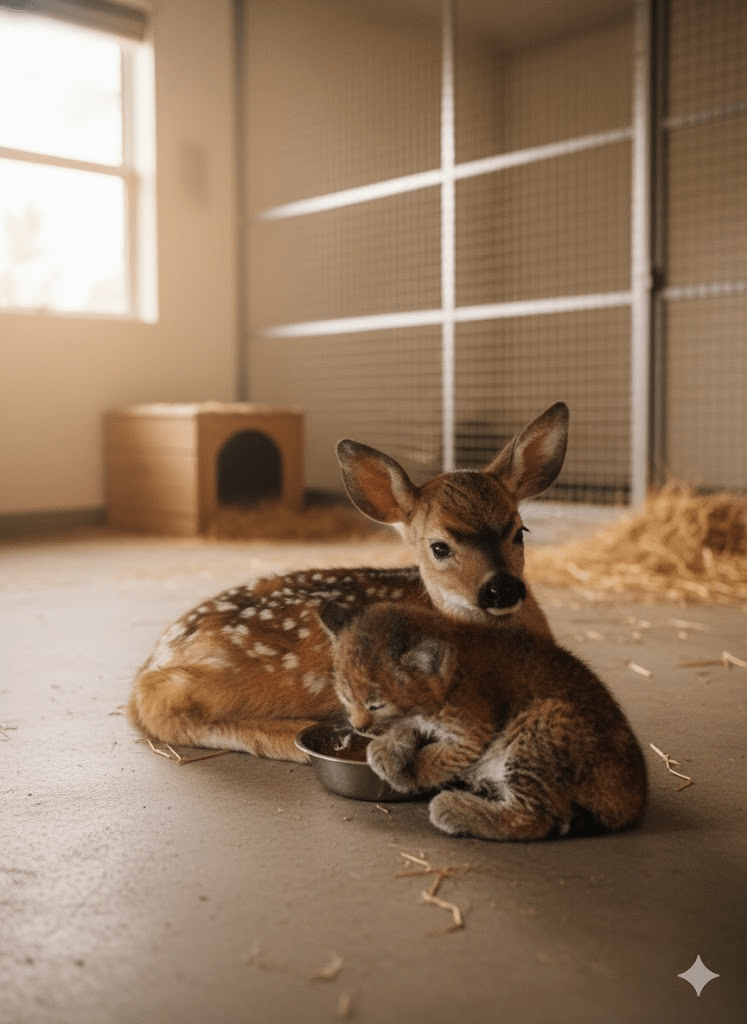
Wildlife experts and veterinarians were initially baffled by this unprecedented display of cross-species camaraderie. While instances of interspecies relationships have been documented, the intensity and duration of this particular bond, especially between a natural predator and prey, were considered exceedingly rare, almost unheard of. Theories abounded: perhaps the shared terror had overridden their primal programming, creating a unique psychological imprint. Or perhaps, in their infancy, their survival instincts were not yet fully developed, allowing for an extraordinary connection to form in the crucible of their shared trauma. Whatever the scientific explanation, it became clear that the fire had not only ravaged their habitat but had also, in a strange and beautiful twist of fate, forged an unbreakable friendship that defied all biological norms.
